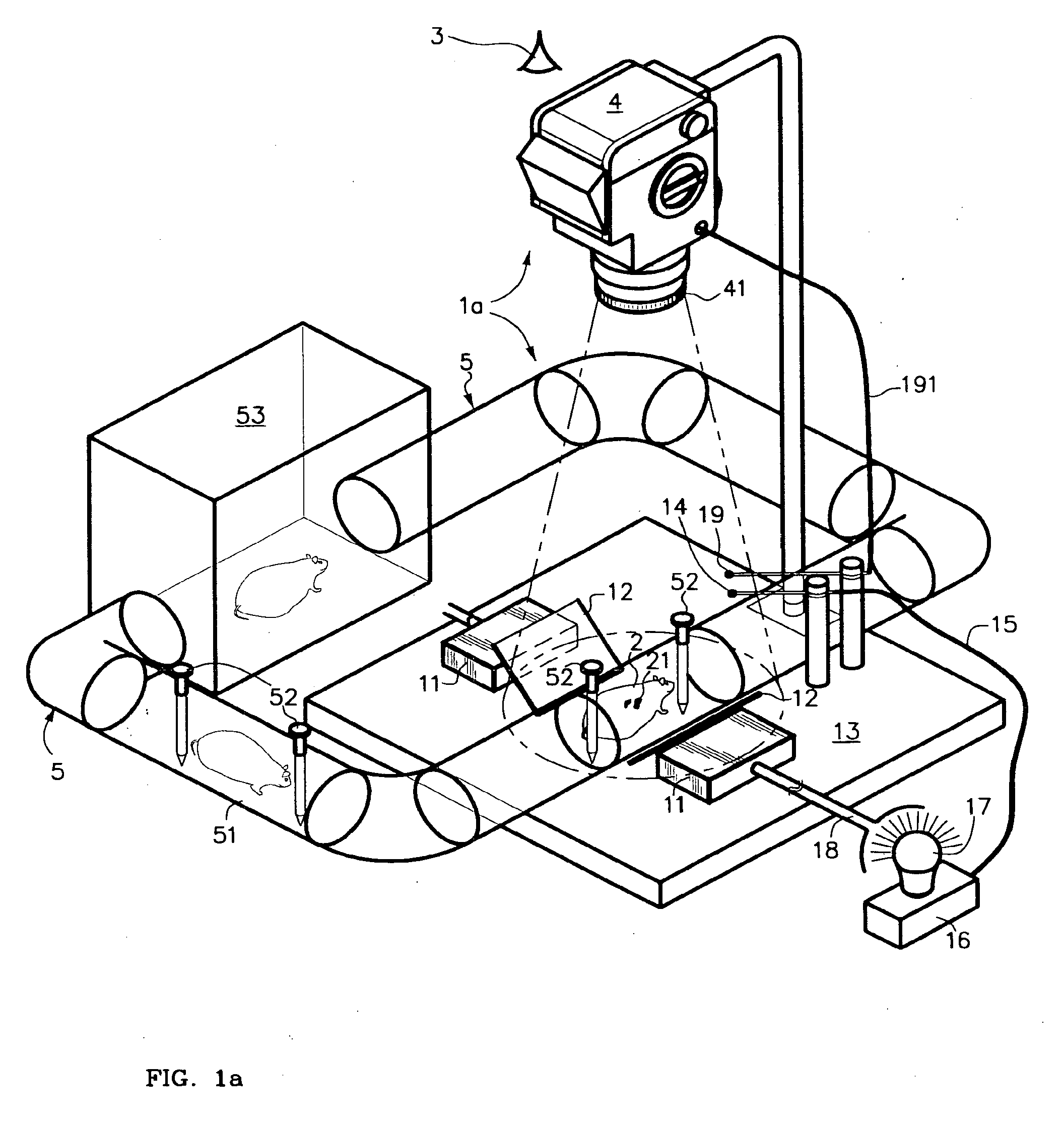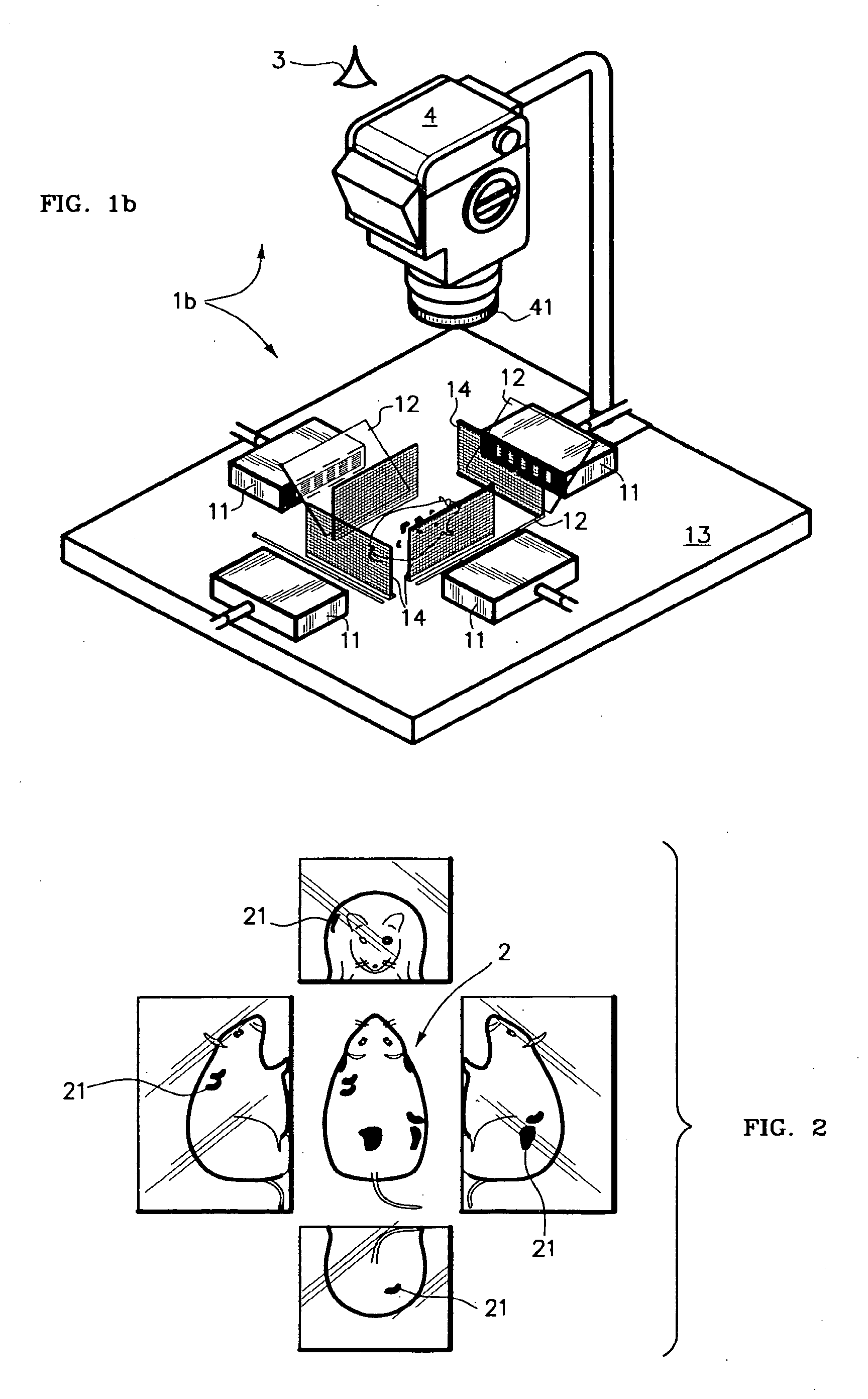Illuminating and panoramically viewing a macroscopically-sized specimen along a single viewing axis at a single time
a macroscopically-sized specimen and panoramic technology, which is applied in the field of illumination and panoramic viewing of macroscopically-sized specimens along a single viewing axis at a time, can solve the problems of not being able to calibrate the brightness of induced fluorescence, the image or photograph produced by conventional illumination and observation of macroscopically-sized specimens, such as the biological specimen of a mouse, tend to be rather crude, etc., to achieve selective adjustment of intensities and/or color ratio ratio ratio ratio ratio ratio ratio ratio ratio ratio ratio ratio ratio ratio
- Summary
- Abstract
- Description
- Claims
- Application Information
AI Technical Summary
Benefits of technology
Problems solved by technology
Method used
Image
Examples
Embodiment Construction
[0087]The following description is of the best mode presently contemplated for the carrying out of the invention. This description is made for the purpose of illustrating the general principles of the invention, and is not to be taken in a limiting sense. The scope of the invention is best determined by reference to the appended claims.
[0088]Although specific embodiments of the invention will now be described with reference to the drawings, it should be understood that such embodiments are by way of example only and are merely illustrative of but a small number of the many possible specific embodiments to which the principles of the invention may be applied. Various changes and modifications obvious to one skilled in the art to which the invention pertains are deemed to be within the spirit, scope and contemplation of the invention as further defined in the appended claims.
[0089]A diagrammatic view of a first, rudimentary, embodiment of an illumination and viewing apparatus 1a in ac...
PUM
| Property | Measurement | Unit |
|---|---|---|
| viewing angle | aaaaa | aaaaa |
| dichroic | aaaaa | aaaaa |
| fluorescent emission | aaaaa | aaaaa |
Abstract
Description
Claims
Application Information
 Login to View More
Login to View More - R&D
- Intellectual Property
- Life Sciences
- Materials
- Tech Scout
- Unparalleled Data Quality
- Higher Quality Content
- 60% Fewer Hallucinations
Browse by: Latest US Patents, China's latest patents, Technical Efficacy Thesaurus, Application Domain, Technology Topic, Popular Technical Reports.
© 2025 PatSnap. All rights reserved.Legal|Privacy policy|Modern Slavery Act Transparency Statement|Sitemap|About US| Contact US: help@patsnap.com



